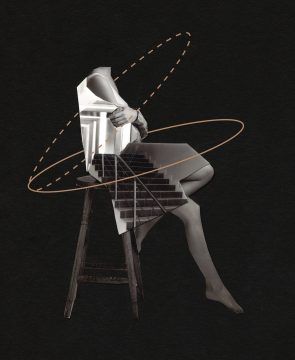Kim Tingley in The New York Times:
 The last class Joel Sanders taught in person at the Yale School of Architecture, on Feb. 17, took place in the modern wing of the Yale University Art Gallery, a structure of brick, concrete, glass and steel that was designed by Louis Kahn. It is widely hailed as a masterpiece. One long wall, facing Chapel Street, is windowless; around the corner, a short wall is all windows. The contradiction between opacity and transparency illustrates a fundamental tension museums face, which happened to be the topic of Sanders’s lecture that day: How can a building safeguard precious objects and also display them? How do you move masses of people through finite spaces so that nothing — and no one — is harmed?
The last class Joel Sanders taught in person at the Yale School of Architecture, on Feb. 17, took place in the modern wing of the Yale University Art Gallery, a structure of brick, concrete, glass and steel that was designed by Louis Kahn. It is widely hailed as a masterpiece. One long wall, facing Chapel Street, is windowless; around the corner, a short wall is all windows. The contradiction between opacity and transparency illustrates a fundamental tension museums face, which happened to be the topic of Sanders’s lecture that day: How can a building safeguard precious objects and also display them? How do you move masses of people through finite spaces so that nothing — and no one — is harmed?
All semester, Sanders, who is a professor at Yale and also runs Joel Sanders Architect, a studio located in Manhattan, had been asking his students to consider a 21st-century goal for museums: to make facilities that were often built decades, if not centuries, ago more inclusive. They had conducted workshops with the gallery’s employees to learn how the iconic building could better meet the needs of what Sanders calls “noncompliant bodies.” By this he means people whose age, gender, race, religion or physical or cognitive abilities often put them at odds with the built environment, which is typically designed for people who embody dominant cultural norms. In Western architecture, Sanders points out, “normal” has been explicitly defined — by the ancient Roman architect Vitruvius, for instance, whose concepts inspired Leonardo da Vinci’s “Vitruvian Man,” and, in Kahn’s time, by Le Corbusier’s “Modulor Man” — as a youngish, tallish white male.
When the coronavirus crisis prompted Yale to move classes online, Sanders’s first thought was: “How do you make the content of your class seem relevant during a global pandemic? Why should we be talking about museums when we have more urgent issues to fry?” Off campus, built environments and the ways people moved in them began to change immediately in desperate, ad hoc ways. Grocery stores erected plexiglass shields in front of registers and put stickers or taped lines on the floor to create six-foot spacing between customers; as a result, fewer shoppers fit safely inside, and lines snaked out the door. People became hyperaware of themselves in relation to others and the surfaces they might have to touch. Suddenly, Sanders realized, everyone had become a “noncompliant body.” And places deemed essential were wrestling with how near to let them get to one another. The virus wasn’t simply a health crisis; it was also a design problem.
More here.
